The Sixth Floor Museum
Dallas' Tribute to John F. Kennedy
Article Date: January, 2014
Article and Photography by Mark Quasius
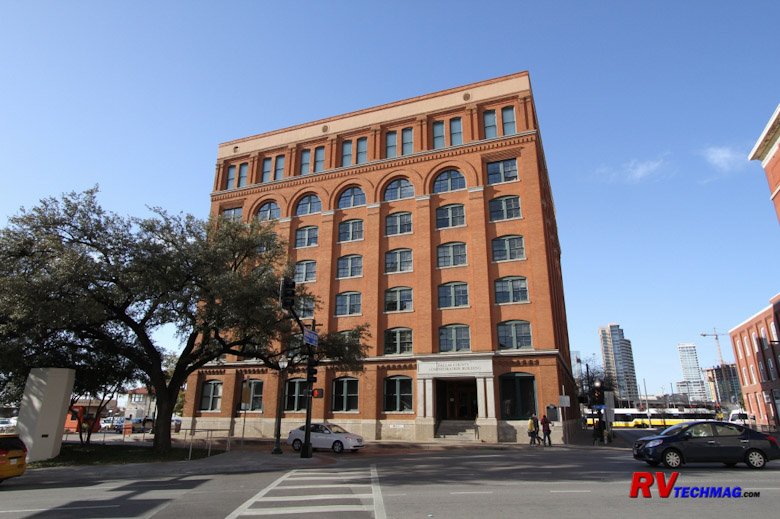
The Museum
These events, as well as the life and legacy of John F. Kennedy are memorialized in the Sixth Floor Museum. The Texas Book
Depository was sold to the city of Dallas, who now uses the first five floors as administrative offices. In 1989, the Sixth Floor Museum at Dealey
Plaza opened to the public. Visitors enter via an annex and are fitted with audio guides and headphones that will guide you through the various
exhibits. Visitors ride an elevator to the sixth floor and enter the building through a former window. The tour begins by setting the scene for the
early 1960s. Items on display reflect the culture of the time, including social movements, political events and a fragment from the Berlin Wall.
Photographs and a short film document the life of President Kennedy. The Trip to Texas section follows and examines the reasons for Kennedy's trip
to Texas.
The Corner Window section recreates the sniper's perch as it was found on that fatal day. Cases of books are stacked in the
correct location and this area is closed off with glass to protect the original floor and the setting. There is no public access to that actual
window but the bank of windows to the side provides visitors with an opportunity to see Dealey Plaza much as Oswald would have seen it. The trees
have grown in the last 50 years so the clear line of sight that was present on that day no longer exists but it affords visitors a good
representation.
|

Oswald had strategically stacked cases of books in the corner of the sixth floor to hide his sniper's perch from anyone passing by. This
area has been restored to its original 1963 appearance and is surrounded by a glass enclosure.
|
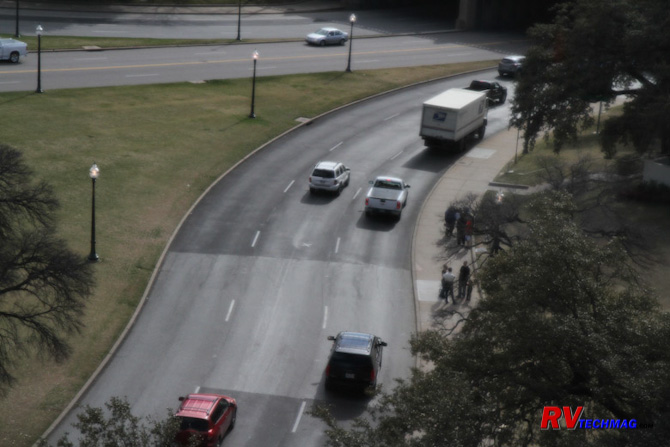
This view from the sniper's perch is similar to Oswald's, although the trees have grown and filled out during the last 50 years and masked
the clear view Oswald had in 1963.
|
The Crisis Hours section follows. An extensive collection of photographs and historic film footage documents everything that
followed. Photographs and films of Lyndon Baines Johnson's oath of office, JFK's funeral procession, Jack Ruby's shooting of Oswald and various
public reactions are all captured and on display. Included is the original radio broadcast by Pierce Allman, the first reporter to broadcast from
the Texas School Book Depository on November 22, 1963.
The Investigations section outlines the four official investigations, beginning with the local investigation in 1963,
outlining the participants and their findings. A 10' by 10' model of Dealey Plaza, prepared by the FBI for the Warren Commission in 1964 and on loan
from the National Archives is on display as is a collection of 13 cameras used in Dealey Plaza on November 22, 1963. Nearly 80% of the American public
believes that President Kennedy's death was the result of a conspiracy. A wall is also devoted to the various conspiracy theories that have surfaced
over the years and is devoted to the conspirators and their motives.
|
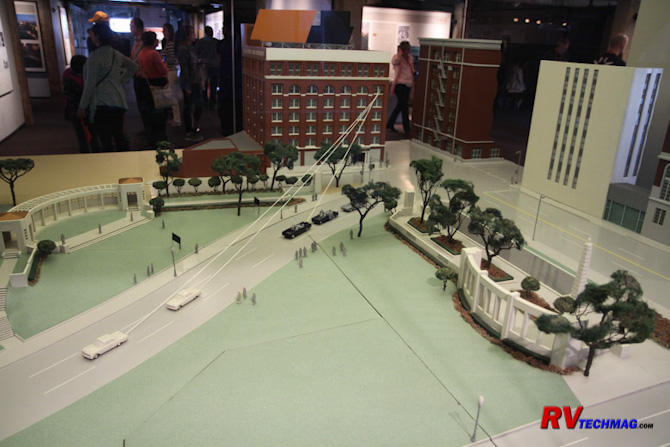
This is the actual 10 foot by 10 foot model of Dealey Plaza that the FBI created to assist in the Warren Commission's investigation.
It is on loan from the National Archives.
|
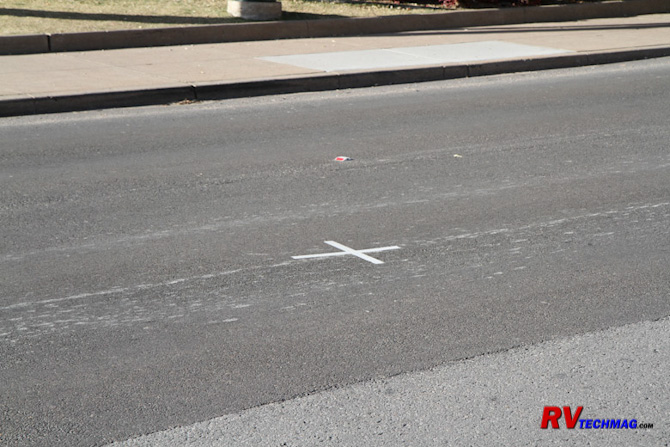
Two X marks on the pavement show the approximate locations of the limousine when the President was shot.
|
Final sections are devoted to President Kennedy's legacy. A film narrated by Walter Cronkite looks at the aftermath of the
assassination, his legacy of hope and the impact of his death. Lastly, an identical rifle to the one that Oswald used is on display where he hid it
behind some boxes before dashing down the staircase to the lunchroom. Oswald's actual rifle is in the FBI Museum in Washington, DC.
The museum also holds a first floor reading room which contains an extensive collection of books, magazines and newspapers
covering topics from Kennedy's life and legacy to conspiracy theories. A librarian can assist you in finding the correct material, which includes
rare and out of print items as well as close to 1,000 oral interviews. The Museum Store and Cafe is located across the street in the historic 501 Elm
building. Light lunches, snacks and beverages are available here as well as gifts, books and items by local artisans. A museum gift shop and rest
rooms are also located in the museum's entry at 411 Elm Street.
|
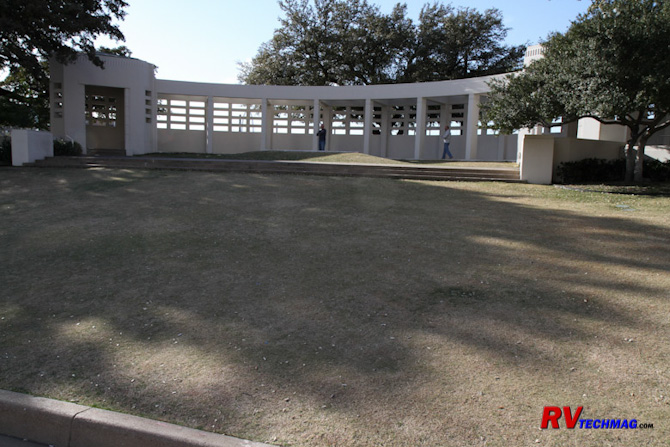
The grassy knoll next to the Texas Book depository is where Abraham Zapruder was filming the entire procession with his 8mm movie camera.
His film is the sole copy that recorded the assassination and was immensely helpful to the investigation.
|

This image was taken from the same pedestal Abraham Zapruder was standing on when he filmed the motorcade, showing the same view that
Zapruder had of the event.
|
|
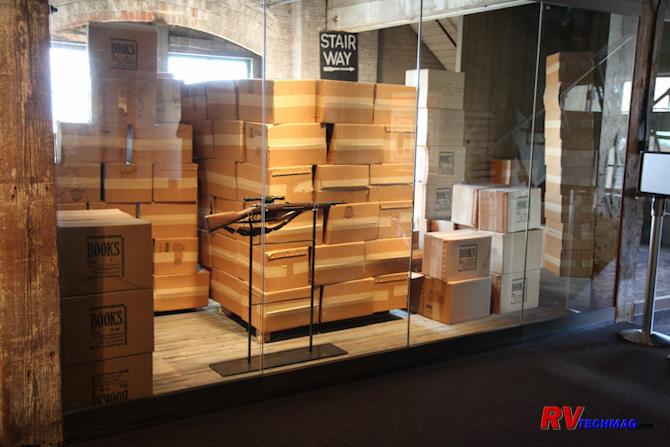
After the fatal shots were fired, Oswald hid his 6.5mm Mannlicher-Carcano rifle behind boxes near the stairwell, then
raced down the stairs to the lower level. This rifle is an identical copy to the one that Oswald used. The originl is
in the FBI Museum in Washington, DC.
|
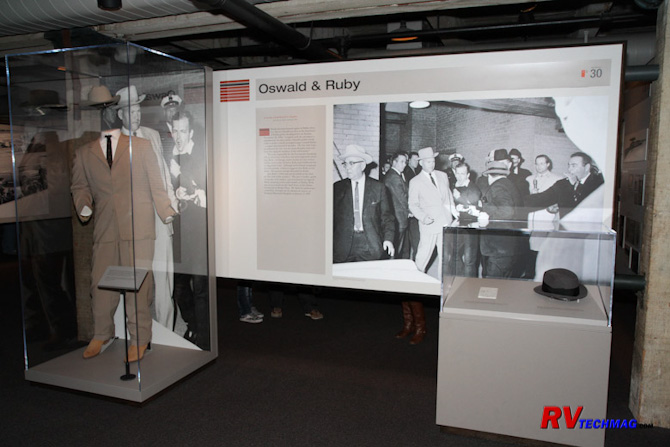
Jack Ruby shot Oswald on November 24, 1963 in the basement of the Dallas police station while being transported. The suit worn
by Jim Leavelle, the detective escorting Oswald, Jack Ruby's hat and the handcuffs used to shackle Oswald are on display in front of
Bob Jackson's Pulitzer Prize-winning photograph of the shooting.
|
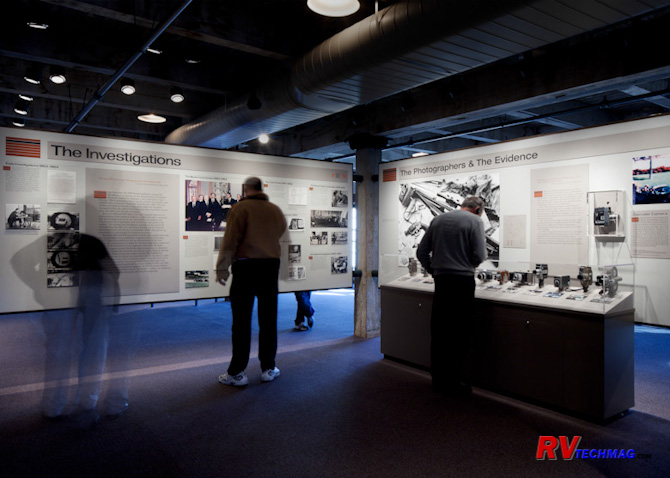
The museum is filled with a large number of artifacts and interpretive exhibits, such as this collection of cameras used during the event.
Return to Home Page
If you enjoyed this article be sure to recommend RVtechMag.com to your friends, like us on Facebook or Twitter
or subscribe to our RSS feed.



|














